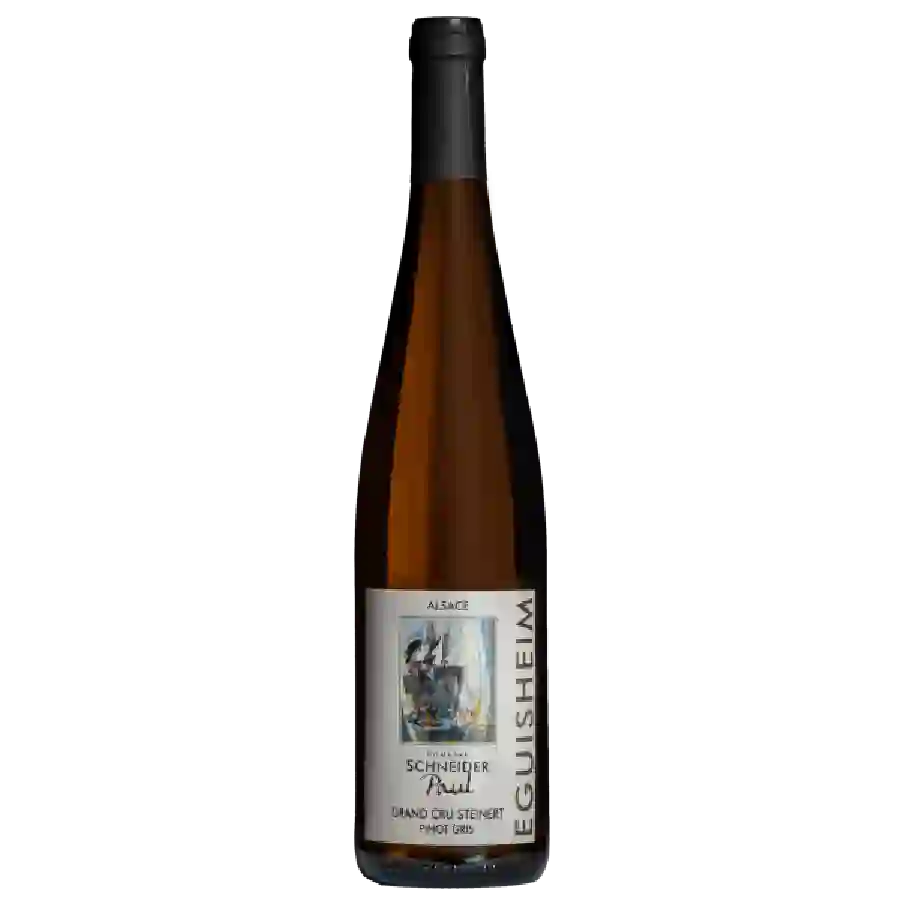
Winery PfaffenheimPinot Gris Steinert Alsace Grand Cru
In the mouth this white wine is a powerful.
This wine generally goes well with pork, cured meat or mushrooms.
Taste structure of the Pinot Gris Steinert Alsace Grand Cru from the Winery Pfaffenheim
Light | Bold | |
Dry | Sweet | |
Soft | Acidic |
In the mouth the Pinot Gris Steinert Alsace Grand Cru of Winery Pfaffenheim in the region of Alsace is a powerful.
Wine flavors and olphactive analysis
On the nose the Pinot Gris Steinert Alsace Grand Cru of Winery Pfaffenheim in the region of Alsace often reveals types of flavors of pineapple, cream or tropical and sometimes also flavors of apples, peach or apricot.
Food and wine pairings with Pinot Gris Steinert Alsace Grand Cru
Pairings that work perfectly with Pinot Gris Steinert Alsace Grand Cru
Original food and wine pairings with Pinot Gris Steinert Alsace Grand Cru
The Pinot Gris Steinert Alsace Grand Cru of Winery Pfaffenheim matches generally quite well with dishes of pork, spicy food or mushrooms such as recipes of roast pork in the oven, traditional lamb couscous (from algeria) or paupiettes à la mérignicaise.
Details and technical informations about Winery Pfaffenheim's Pinot Gris Steinert Alsace Grand Cru.
Discover the grape variety: Pinot gris
Pinot Gris is a grey grape variety mutated from Pinot Noir. It has its origins in Burgundy, where it is called pinot-beurot in reference to the colour of the grey robes worn by the monks of the region. Established in Alsace since the 17th century, pinot gris was called tokay until 2007. It is made up of bunches of small berries that vary in colour from pink to blue-grey. It is particularly well suited to the continental climate because it is resistant to the cold in winter and to spring frosts. This variety also likes dry limestone soils with plenty of sunshine in the summer. Pinot Gris is well suited to late harvesting or to the selection of noble grapes, depending on the year and the concentration of sugars in the berries. Pinot Gris wines are distinguished by their aromatic complexity of white fruits, mushrooms, honey, vanilla, cinnamon, etc., and their great finesse. In the Loire Valley, pinot gris is used in the Coteaux-d'Ancenis appellations. It gives dry or sweet wines with pear and peach aromas.
Last vintages of this wine
The best vintages of Pinot Gris Steinert Alsace Grand Cru from Winery Pfaffenheim are 2012, 2011, 2009, 2013 and 2008.
Informations about the Winery Pfaffenheim
The Winery Pfaffenheim is one of of the world's greatest estates. It offers 96 wines for sale in the of Alsace Grand Cru 'Steinert' to come and discover on site or to buy online.
The wine region of Alsace Grand Cru 'Steinert'
The wine region of Alsace Grand Cru 'Steinert' is located in the region of Alsace Grand Cru of Alsace of France. Wineries and vineyards like the Domaine Pierre Frick or the Domaine Pfaffenheim produce mainly wines white, sweet and red. The most planted grape varieties in the region of Alsace Grand Cru 'Steinert' are Gewurztraminer, Pinot gris and Riesling, they are then used in wines in blends or as a single variety. On the nose of Alsace Grand Cru 'Steinert' often reveals types of flavors of pineapple, earth or caramel and sometimes also flavors of citrus, dried fruit or vegetal.
The wine region of Alsace
Alsace, located in the extreme north-east of France, is Distinguished from other French wine regions by its strong Franco-Germanic influences. These influences are the result of a back-and-forth between the German and French sovereignties over the last few centuries. They can be seen not only in the architecture and culture of Alsace, but also in the wines. Alsace wines are produced under three main appellations: Alsace and Alsace Grand Cru for still white wines (Sweet and Dry), and Crémant d'Alsace for Sparkling wines.
The word of the wine: Phylloxera
Aphid that came from America and ravaged European vineyards at the end of the 19th century. It lives on the roots of the vine, from which it pumps the sap. The only vines capable of resisting it had to be imported from the United States, and then grafted onto their root system the wood of traditional French grape varieties. Today, grafted vines are always planted.









